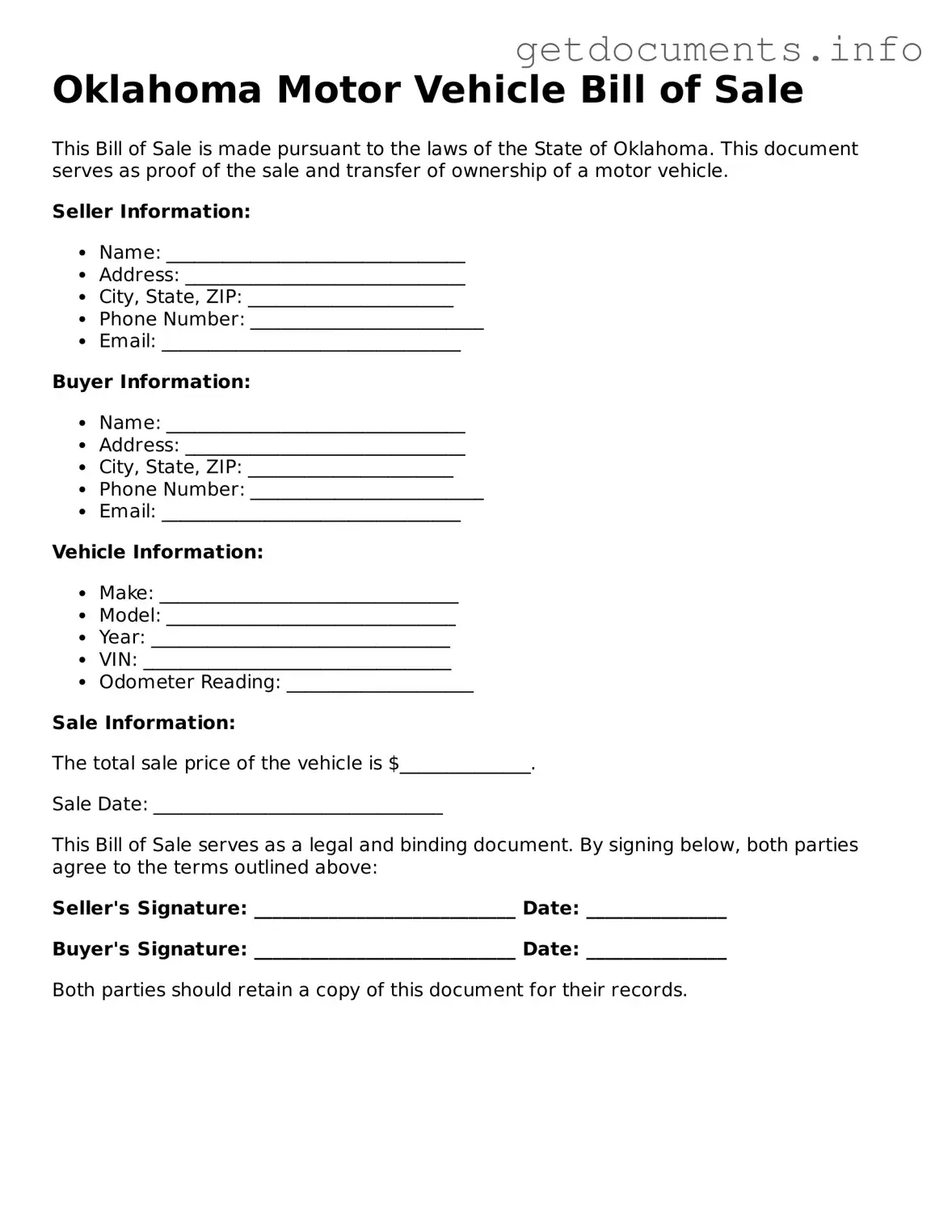Free Motor Vehicle Bill of Sale Template for Oklahoma
The Oklahoma Motor Vehicle Bill of Sale form is a legal document that records the transfer of ownership of a vehicle from one party to another. This form is essential for both buyers and sellers, as it provides proof of the transaction and helps protect the rights of both parties. To ensure a smooth transfer, it is important to fill out this form accurately.
Ready to complete your transaction? Fill out the form by clicking the button below.
Access Motor Vehicle Bill of Sale Editor
